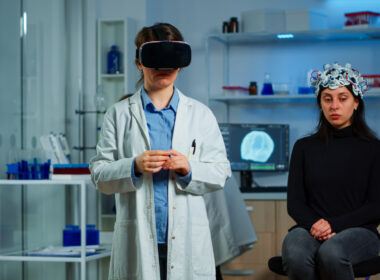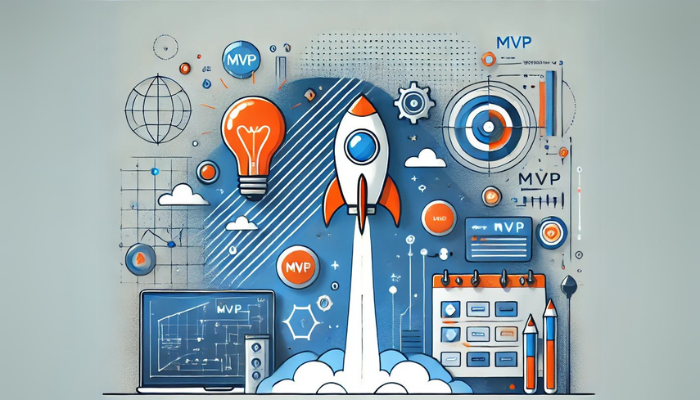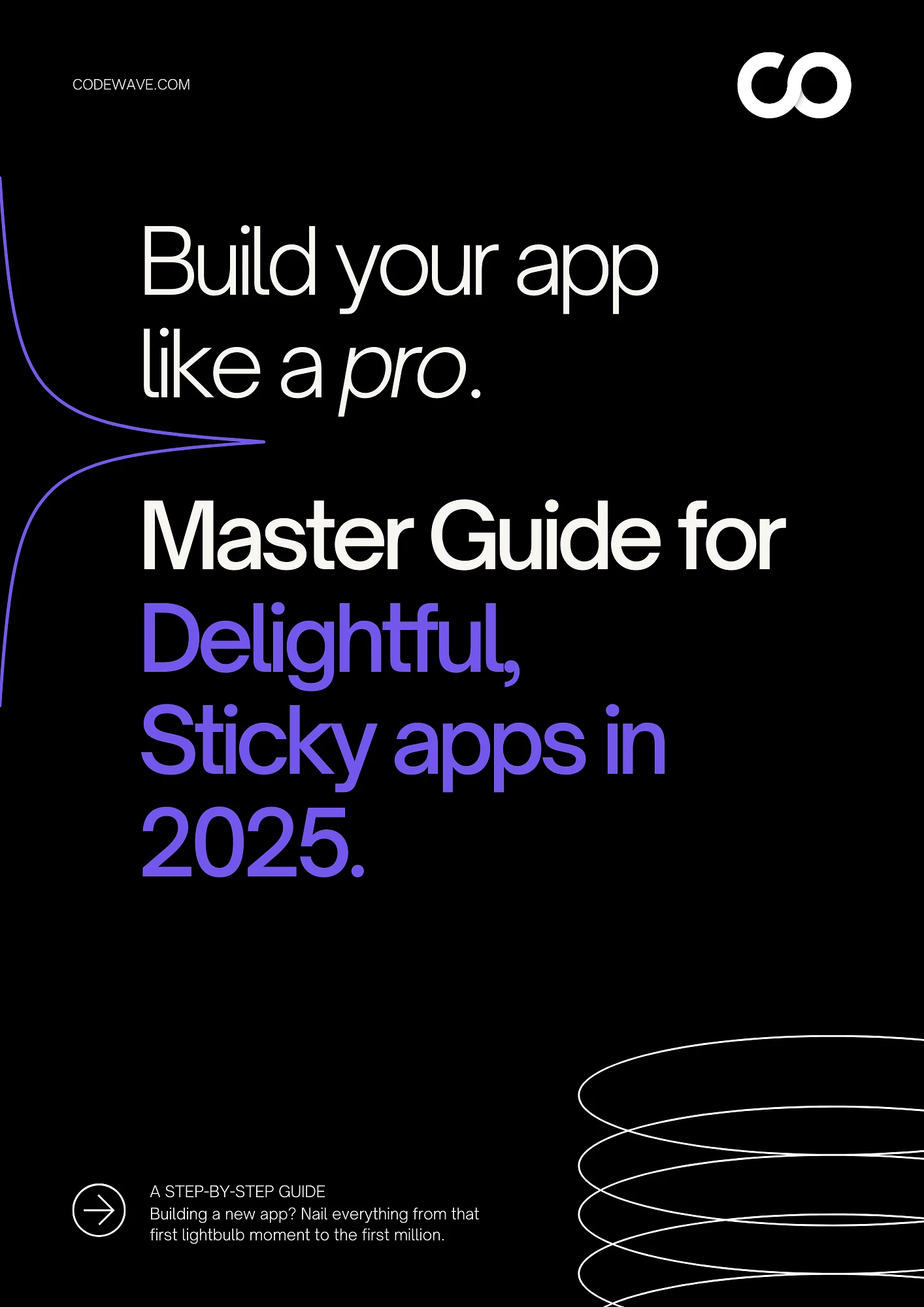Technology interactions have evolved, and chatbots are at the forefront. No longer static assistants, they’ve become intelligent systems that understand context, engage in meaningful conversations, and integrate seamlessly with enterprise operations.
Open-source chatbot frameworks are driving this change, offering teams the flexibility to build smarter bots without being confined to proprietary platforms. These frameworks enable customization, AI experimentation, and multi-channel deployment, all while maintaining control over data and code.
As AI and generative models advance, open-source platforms are laying the groundwork for scalable, personalized chatbot interactions across industries. In this article, we’ll dive into the top open-source chatbot frameworks of 2025, exploring their strengths, innovations, and key considerations for your next project.
Quick Look
- Open-source chatbot frameworks offer transparency, control, and flexibility, allowing developers to build highly customized bots.
- They are cost-effective, scalable, and backed by active developer communities, which helps speed up innovation and updates.
- Top frameworks for 2025 include Rasa (AI-driven customization), BotPress (visual UI for fast deployment), and Microsoft Bot Framework (enterprise-ready with Azure integration).
- These platforms give you full control over data and security, ensuring compliance and customization.
- Tock and DeepPavlov are ideal for specialized use cases like voice or advanced NLP bots. SnatchBot and Wit.ai are best for quick, low-code deployment.
- Your choice depends on your goals: customization (Rasa), speed (BotPress), or enterprise scalability (Microsoft Bot Framework).
The best choice depends on your goals: customization (Rasa), speed (BotPress), or enterprise scalability (Microsoft Bot Framework).
Why Open Source Chatbot Frameworks Matter
Building a chatbot today is less about finding the right tool; it’s about finding the right foundation. The framework behind it shapes how fast it adapts, how naturally it converses, and how smoothly it fits into your digital ecosystem.
That’s where open source frameworks have changed the game.
1. Transparency and Control
Unlike proprietary platforms that hide their inner workings, open source frameworks give you full visibility. You can review the code, customize logic, and shape your chatbot’s behavior from the ground up.
This freedom to build and to understand what’s being built is what separates open source chatbots from pre-packaged tools.
2. Cost-Efficient and Scalable
Most commercial chatbot platforms charge by conversation, user, or integration.
Those costs can add up quickly.
Open source frameworks, by contrast, are free to use and host anywhere. You only pay for your infrastructure and your team’s time, not the software license.
That flexibility makes open source a smarter long-term choice for scaling.
3. A Community That Moves Faster Than Any Roadmap
Frameworks like Rasa, BotPress, and Tock aren’t just products; they’re living ecosystems.
Thousands of developers worldwide contribute code, share best practices, and publish new modules. This constant collaboration means your chatbot evolves alongside the community, not on a vendor’s timeline.
4. Built-In Trust and Security
Open frameworks allow you to audit your own system, no blind trust required.
You can host data on your servers, enforce your own security standards, and verify compliance independently. That’s a level of assurance few closed platforms can match.
In short:
Open source chatbot frameworks combine flexibility, transparency, and community-driven innovation, giving teams the power to build conversational AI that fits their vision.
Best Open Source Chatbot Frameworks in 2025 (Reviewed & Compared)
The open-source chatbot landscape has matured significantly. What used to be small developer experiments are now production-grade frameworks powering enterprise-scale conversational systems.
Below are some of the most reliable and community-backed open source chatbot frameworks to explore in 2025, each with its own strengths, learning curve, and ideal use case.
Quick Comparison Table
| Framework | Best For | Core Language | License | Key Strength |
| Rasa | Custom, AI-driven chatbots | Python | Apache 2.0 | Strong NLU + full control |
| BotPress | Visual chatbot building | Node.js | AGPLv3 | Easy to use + modular |
| Microsoft Bot Framework | Enterprise-grade deployments | C#, Node.js | MIT | Integrates with the Azure AI stack |
| DeepPavlov | Advanced NLP + research use | Python | Apache 2.0 | Powerful pre-trained models |
| Tock | Voice + text bots (multimodal) | Kotlin, Java | Apache 2.0 | Supports speech and messaging |
| OpenDialog | Context-aware conversations | JavaScript | Apache 2.0 | Dialogue design flexibility |
| Wit.ai | Social + lightweight bots | Multiple | MIT | Fast intent recognition |
| SnatchBot | Quick setup for SMBs | N/A (cloud) | Free/proprietary | No-code simplicity |
| Kuki AI | Personality-driven bots | Proprietary | Limited | Engaging humanlike tone |
| Kore.ai | Enterprise workflows | JavaScript | Commercial with free tier | Secure and scalable |
1. Rasa: The Developer’s Powerhouse
Rasa remains the most popular open source chatbot framework for teams that want complete control. Built on Python, it offers advanced natural language understanding (NLU), dialogue management, and machine learning pipelines that you can train and fine-tune for specific business domains.
- Why it stands out: Freedom to host anywhere and customize everything, from intent classification to context handling.
- Ideal use: Building AI chatbots that need deep contextual understanding, such as support automation or healthcare assistants.
2. BotPress: Open Source with a Modern UI
BotPress bridges the gap between open source flexibility and low-code usability. Its visual flow builder lets teams design conversations quickly while still allowing full access to code when needed.
- Why it stands out: Combines drag-and-drop simplicity with developer-level customization.
- Ideal use: Marketing or operations bots that need to launch fast but stay customizable as they scale.
3. Microsoft Bot Framework: Enterprise-Ready and Robust
Backed by Microsoft’s ecosystem, this framework integrates deeply with Azure Cognitive Services for NLU, analytics, and speech capabilities. It’s battle-tested for enterprise use cases and offers multi-channel deployment out of the box.
- Why it stands out: Seamless integration with Microsoft Teams, Dynamics, and enterprise-grade security standards.
- Ideal use: Large-scale internal bots and customer service automation in enterprise environments.
4. DeepPavlov: For Research and Advanced NLP
Developed by Moscow’s Neural Networks and Deep Learning Lab, DeepPavlov is known for its powerful pre-trained dialogue models and flexibility for academic and experimental AI work.
- Why it stands out: High-quality NLP modules ready for customization and research.
- Ideal use: Research projects or AI-driven bots needing deep learning control.
5. Tock: Multimodal and Enterprise-Friendly
Tock is built for voice and text chatbots that need to work seamlessly across channels and devices. Its component-based architecture supports speech, messaging apps, and IoT integrations.
- Why it stands out: True multimodal support, one bot for both voice and chat.
- Ideal use: Voice assistants, smart device interfaces, or omni-channel retail bots.
6. OpenDialog: Context-Aware and Designer-Friendly
OpenDialog focuses on designing intelligent conversation flows that adapt based on context and user behavior. It’s highly visual but underpinned by flexible dialogue logic that suits enterprise workflows.
- Why it stands out: Allows complex, branching conversation design with intuitive structure.
- Ideal use: Customer support or service bots that need layered, context-driven dialogue.
7. Wit.ai: Lightweight NLP from Meta
Wit.ai simplifies natural language processing and connects easily with platforms like Messenger and WhatsApp. While not as customizable as Rasa, it’s great for fast, intent-based bots.
- Why it stands out: Simple NLP engine for developers building social media bots.
- Ideal use: Lightweight Q&A bots and digital assistants.
8. SnatchBot: Simple and Accessible
SnatchBot offers a no-code builder for quick bot creation and deployment. While not as flexible as others, it’s ideal for small-scale automation without developer overhead.
- Why it stands out: Instant setup and multi-channel publishing.
- Ideal use: SMEs or pilot chatbot projects needing low-cost automation.
9. Kuki AI: Personality-Driven Chatbots
Kuki AI focuses on personality and engagement over raw function. It’s built for creating bots that feel human, entertaining, or conversationally rich.
- Why it stands out: Fun, expressive chatbots with emotional tone.
- Ideal use: Gaming, entertainment, or brand engagement bots.
10. Kore.ai: Enterprise Conversational Platform
Kore.ai provides an enterprise-grade platform that balances open configuration with enterprise support and scalability. It’s ideal for integrating bots into existing business systems like Salesforce or SAP.
- Why it stands out: Combines automation, NLP, and analytics in one platform.
- Ideal use: Enterprises looking for secure, scalable conversational AI at scale.
Pro Tip
Open source chatbot frameworks aren’t competitors; they’re building blocks. Many teams use a combination: Rasa for NLU, BotPress for the visual layer, and Tock for voice interactions.
Looking to scale your chatbot? Codewave specializes in designing and deploying intelligent chatbots using the best open-source frameworks. Get in touch and start building with us.
The key is choosing the right blend that matches your use case, technical depth, and long-term scalability goals.
Framework Comparison: Which AI Chatbot Framework Fits Your Use Case?
Choosing the right framework isn’t just about what’s popular; it’s about what fits.
Each open source chatbot framework has its strengths, quirks, and ideal environment.
Below is a breakdown of which ones work best depending on your goals, technical stack, and project complexity.
For Developer-Led Teams: Control and Flexibility Above All
If you want full ownership of your chatbot’s architecture and behavior, go with frameworks that emphasize transparency, modularity, and advanced AI control.
| Framework | Why It Fits |
| Rasa | Offers deep customization, Python-based NLU pipelines, and full local hosting, perfect for developers who want to train custom intent models. |
| DeepPavlov | Built for AI experimentation, offering fine-grained control over dialogue systems and data preprocessing. |
| Tock | Great for hybrid voice + text projects that need open architecture and API-level integration flexibility. |
Best suited for: technically skilled teams, in-house AI engineers, or research projects where full transparency is non-negotiable.
For Enterprise Environments: Scale, Integration, and Security
When compliance, scalability, and reliability are critical, frameworks that integrate seamlessly with enterprise infrastructure make the most sense.
| Framework | Why It Fits |
| Microsoft Bot Framework | Tightly integrated with Azure Cognitive Services, strong on security, analytics, and enterprise workflow automation. |
| Kore.ai | Enterprise-grade automation with pre-built connectors for SAP, Salesforce, and ServiceNow. |
| OpenDialog | Perfect for complex, structured conversations helps teams design layered interactions aligned with business logic. |
Best suited for: enterprises prioritizing governance, integration with CRM/ERP systems, and compliance assurance.
For Fast-Moving Teams: Launch Quickly, Iterate Often
When speed matters more than deep customization, low-code or modular open source tools help get your chatbot live quickly, without sacrificing flexibility later.
| Framework | Why It Fits |
| BotPress | Combines a visual conversation builder with developer-level extensibility. Easy to start, powerful to grow. |
| SnatchBot | Ideal for teams launching pilots or simple support bots. Zero-code setup and instant deployment. |
| Wit.ai | Lightweight NLP engine from Meta is great for social and messaging app integrations. |
Best suited for: startups, marketing automation, or internal communication bots where time-to-market is key.
For Creative or Engagement-Focused Experiences
If your chatbot’s role leans toward personality, entertainment, or interactive engagement, look for frameworks designed to feel more human than transactional.
| Framework | Why It Fits |
| Kuki AI | Built for emotional tone, humor, and brand-aligned personalities. Excellent for user engagement or gaming bots. |
| BotPress (Custom UI) | Allows styling and custom conversation flows that blend seamlessly with brand design. |
Best suited for: customer engagement, education, gaming, and brand storytelling experiences.
Bottom Line
No single framework does it all. The best open source chatbot framework for you depends on what you value most: control, speed, scalability, or creativity.
A good approach is to start small, prototype with a lightweight tool like BotPress or Wit.ai, then scale using Rasa or Microsoft Bot Framework once your use cases mature.
And remember, the framework is just the foundation. Real success comes from how it’s implemented, integrated, and maintained over time.
How to Choose the Right Open Source Chatbot Framework
With so many chatbot frameworks available, the hardest part isn’t finding one; it’s choosing the right fit.
The best framework for your organization depends less on feature lists and more on your goals, resources, and growth plans.
Here’s a straightforward way to evaluate your options before you start building.
1. Define What Your Chatbot Should Actually Do
Before comparing frameworks, get crystal clear on your chatbot’s purpose. Is it meant to answer FAQs, handle transactions, automate internal requests, or support customers 24/7?
A support bot and a voice assistant demand very different frameworks. If your needs are complex, like multi-turn conversations or integrations with CRM systems, you’ll need a framework that allows fine-grained control (like Rasa or Microsoft Bot Framework).
2. Match Technical Complexity with Team Skills
Some frameworks require advanced programming and ML expertise, while others provide visual editors or low-code interfaces.
If your team is developer-heavy, open frameworks such as Rasa or Tock will give you full control.
If you need faster setup or fewer technical hurdles, tools like BotPress or Wit.ai can help you get started without deep coding.
3. Evaluate Integration and Scalability Needs
Think long-term. If your chatbot needs to grow with your organization, integrating with CRMs, ERPs, or analytics tools, choose a framework that plays well with APIs and enterprise systems.
Frameworks like Microsoft Bot Framework, Kore.ai, and OpenDialog are designed for enterprise-grade integrations.
Scalability also includes data management, multilingual capabilities, and multi-channel support, all essential as your audience or customer base expands.
4. Review Community, Support, and Documentation
Open source doesn’t mean you’re on your own, but it does mean your support system is the community. Look for frameworks with active GitHub repositories, responsive maintainers, and clear documentation.
A vibrant community ensures faster troubleshooting, regular updates, and plugin availability.
5. Consider Security and Compliance
If you operate in a regulated industry like healthcare, finance, or insurance, data security is non-negotiable. Opt for frameworks that support on-premise hosting, encryption, and access control.
Rasa, for example, lets you host everything locally, keeping sensitive data off external servers.
6. Test Before You Commit
Don’t go all-in too soon. Start with a pilot chatbot that targets a single workflow or user segment.
This allows you to validate user experience, fine-tune NLU accuracy, and identify integration gaps before scaling across departments or customer touchpoints.
If you’re exploring frameworks, you might also want to check out our guide on the Best Chatbot Tools to Use in 2024 to discover tools that pair perfectly with these frameworks.
Quick Decision Checklist
| Question | Why It Matters |
| What problem is the chatbot solving? | Aligns framework choice with outcomes |
| How technical is your team? | Determines ease of adoption |
| What systems does it need to integrate with? | Impacts API and backend compatibility |
| How critical is data privacy? | Defines hosting and compliance needs |
| How soon do you need to launch? | Helps balance flexibility vs. speed |
Choosing the right framework isn’t about finding the “best” one overall; it’s about finding the one that fits your specific goals, users, and technical environment. Start with clarity, test with intention, and build for the long run.
The Future of Open Source Chatbot Frameworks in AI-Powered Automation
The evolution of chatbot frameworks is moving fast — and open source continues to lead the way.
As AI models grow more conversational and context-aware, frameworks are adapting to blend rule-based precision with generative creativity. Chatbots are no longer just interfaces; they’re becoming intelligent collaborators capable of learning from data, understanding nuance, and anticipating needs.
Frameworks like Rasa, BotPress, and Tock are already experimenting with plug-and-play integrations that let teams combine open LLMs, analytics layers, and voice modules in a single build. This modular approach means the chatbot of the future won’t live inside one platform; it’ll live across many.
And as automation becomes more embedded in business operations, transparency, interoperability, and ethics will define how open source AI scales responsibly.
This next chapter isn’t just about smarter bots; it’s about smarter systems built on openness and trust.
When it’s time to move from exploration to execution, Codewave helps bridge the gap between strategy and implementation.
Build Smarter, Scalable Chatbots with Codewave
Selecting an open source chatbot framework is only the first step.
The real challenge lies in turning that framework into a working, scalable AI assistant that connects seamlessly with your business systems and delivers meaningful conversations to your users.
That’s what Codewave does best.
Codewave helps enterprises design, develop, and deploy intelligent chatbots using top open-source frameworks like Rasa, BotPress, and Microsoft Bot Framework.
Our team blends deep AI expertise with UX design thinking, ensuring your chatbot doesn’t just function, it feels right for the people using it.
Whether you’re automating customer support, building internal helpdesk assistants, or experimenting with generative AI for business workflows, Codewave brings together the right tools, architecture, and human insight to make it work securely and at scale.
Conclusion: Building What Comes Next
Every conversation your business automates is a reflection of how you think, operate, and serve.
Open source chatbot frameworks give you the foundation to shape those interactions on your own terms without limitations, hidden code, or dependency on a single platform.
The technology is already here. What matters now is how you use it and how you bring the right expertise to make it work across your ecosystem.
At Codewave, that’s the focus: helping organizations transform ideas into intelligent, human-centered automation. From prototype to large-scale deployment, we build chatbot experiences that feel seamless, intuitive, and alive.
The next generation of chatbots isn’t just built, it’s designed. Let’s design yours. Talk to our experts.
FAQs
1. What is an open source chatbot framework?
An open source chatbot framework is a publicly available software toolkit for building conversational agents. It provides core components like natural language understanding (NLU), dialogue management, and integration tools, all with access to the source code. Developers can customize, extend, and self-host these frameworks to create bots that match their specific use cases.
2. What are the best open source chatbot frameworks in 2025?
Some of the most reliable and widely adopted open source chatbot frameworks in 2025 include Rasa, BotPress, Microsoft Bot Framework, DeepPavlov, and Tock. Each has a strong developer community, flexible architecture, and proven scalability across industries.
3. How is an open source chatbot different from a commercial chatbot platform?
Commercial platforms usually offer ready-made chatbot builders with hosting, UI, and analytics included, but at the cost of customization and data control.
Open source frameworks, on the other hand, give teams full flexibility to modify the code, deploy on their own servers, and integrate deeply with enterprise systems. They’re ideal for organizations that value autonomy and scalability.
4. Are open source chatbots secure for enterprise use?
Yes — in many cases, more secure than closed systems.
Since open source code can be audited, teams can enforce their own security standards, manage access, and ensure compliance with regulations like GDPR or HIPAA. Frameworks such as Rasa and Microsoft Bot Framework support enterprise-grade security configurations.
5. Can open source chatbot frameworks work with AI models like ChatGPT or Llama 3?
Absolutely.
Many open source frameworks now integrate with large language models (LLMs) via APIs or local deployments.
This allows teams to combine generative AI capabilities (like ChatGPT-style responses) with their own domain-specific logic and data — creating chatbots that are both intelligent and brand-aligned.
Codewave is a UX first design thinking & digital transformation services company, designing & engineering innovative mobile apps, cloud, & edge solutions.







